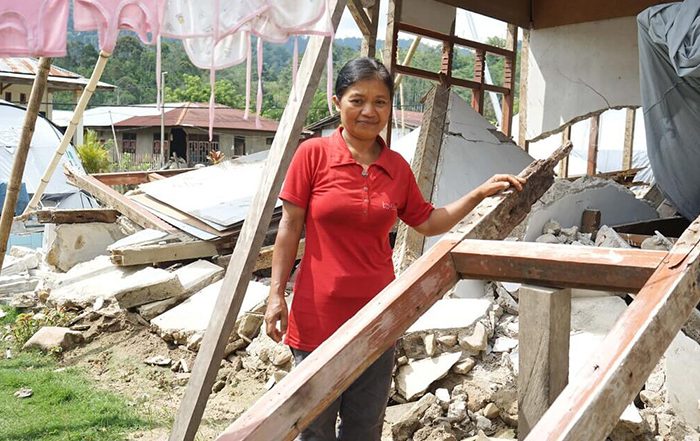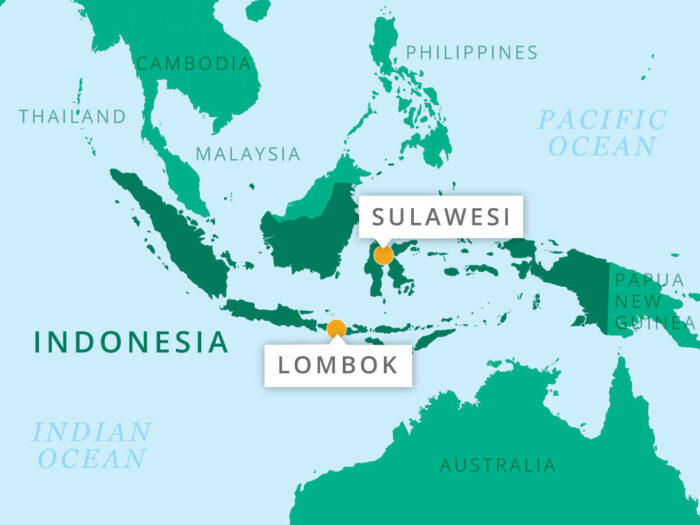
Indonesia earthquakes and tsunami 2018
We supported families who were left homeless in Sulawesi, Indonesia after a powerful earthquake and tsunami shook the island in 2018
We responded to support people with emergency shelter after earthquakes and a tsunami in Indonesia left many homeless in 2018.

Indonesia is formed of a number of islands that sit between the Pacific and Indian Oceans. Nearby countries in southeast Asia include Brunei, Singapore, Malaysia, Vietnam and the Philippines. The islands are off the north coast of Australia.
Indonesia has a mostly tropical climate. It can be impacted by storms from the Pacific. The country also lies on the Pacific Ring of Fire. This means that Indonesia is often subject to earthquakes and tsunamis. The islands also contain several active volcanoes. Indonesia is thought to be vulnerable to climate change. This would particularly be through drought, wildfires and rising sea levels.